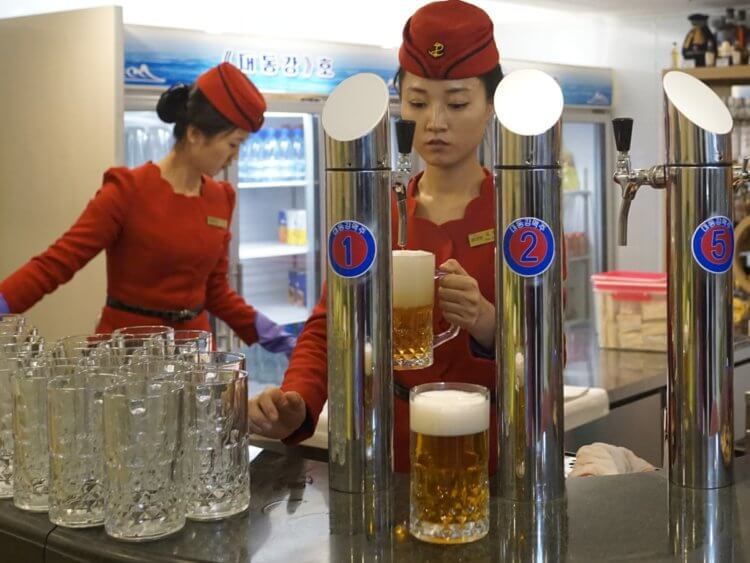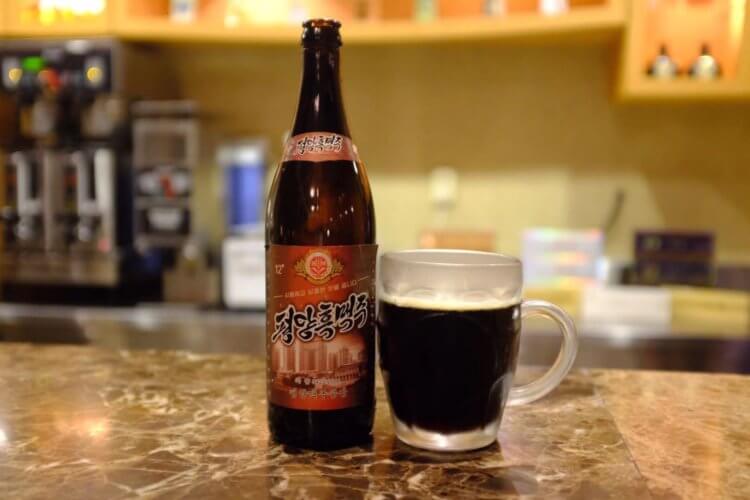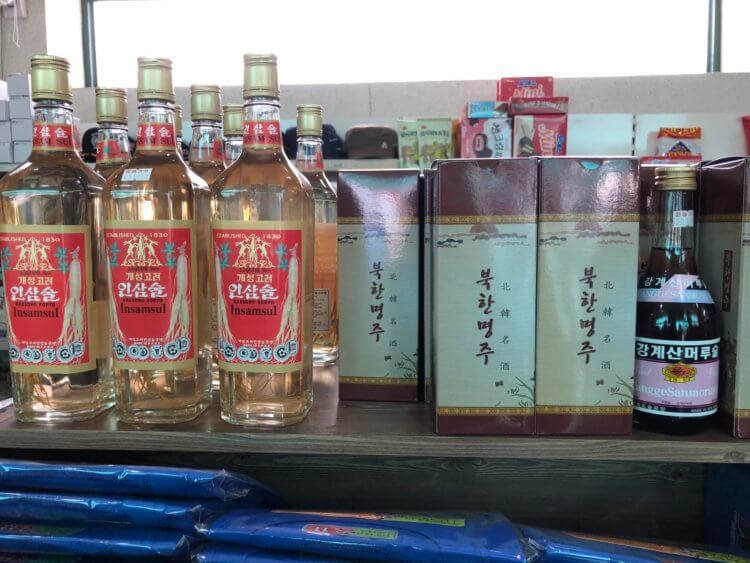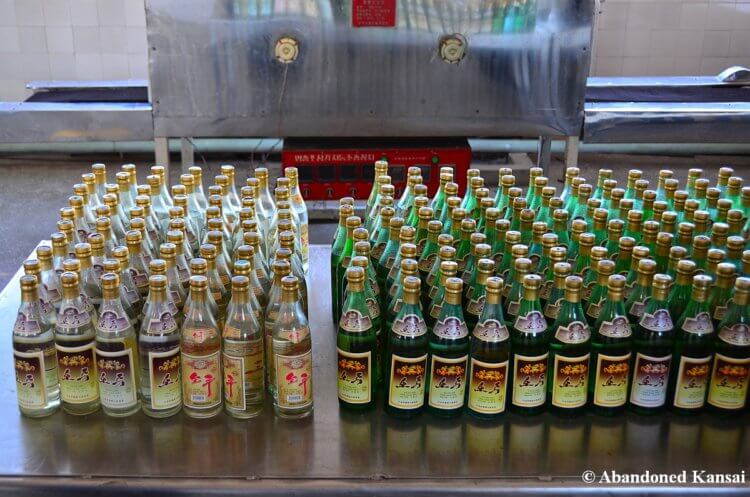North Korea is the most closed and mysterious country in the world. This is because the ruling Kim dynasty and the Workers' Party of Korea control every aspect of citizens' lives in an effort to prevent outside influence. Strict censorship, limited access to information, and controls on the movements of both citizens and foreigners help maintain North Korea's isolation. The geopolitical situation, sanctions and the historical legacy of the Cold War also contribute to this closure. The Juche ideology, which emphasizes self-sufficiency, reinforces the desire for minimal interaction with the outside world. It may seem that absolutely everything is prohibited for North Koreans, including alcoholic beverages, but this is not the case, because alcohol plays a significant role in the cultural and social life of the country. The most common drinks in the DPRK are soju, beer, fruit and medicinal infusions, as well as traditional fermented drinks such as makgeolli.

You can drink alcoholic beverages in North Korea. And they are very different from ours. Image: i.guim.co.uk
Alcohol is an important part of culture and social life in North Korea, with a variety of drinks and traditions that reflect the country's unique history and practices.
Contents
- 1 Culture of alcohol consumption in North Korea
- 2 National alcohol in the DPRK
- 2.1 Beer
- 2.2 Fruit and medicinal tinctures
- 2.3 Fermented drinks
- 3 Soju: what is it and how is it prepared
- 4 Conclusion
Alcohol drinking culture in North Korea
Alcohol in North Korea is consumed in a variety of social contexts. Unlike many other countries, North Korea has no age limit for alcohol consumption, although students (including university students) are generally discouraged from drinking. Alcohol is widely available in this closed country, and its consumption is part of social life, especially during holidays and weekends.
We learn about what is happening inside North Korea mainly through the stories of defectors and tourists who visited it. Thus, in an interview with NK News, one of the defectors, Jae Sung Lee, said that North Koreans drink quite a lot and prefer strong drinks. There are few bars in the country, but alcohol can be purchased in restaurants or at the market, as well as in factories (to drink at home).

According to 2022 data, the population of North Korea is 26 million people. Image: assets.editorial.aetnd.com
Experts and human rights activists even argue that alcoholism in the DPRK is widespread, as it is the only pleasure available. According to a 2018 World Health Organization (WHO) report, annual per capita alcohol consumption in North Korea is 3.7 liters of pure alcohol. 95% comes from strong drinks and 5.1% from beer.
You may be interested in: Internet in North Korea: hundreds of sites and a death sentence for the “Squid Game”
For Over the past couple of decades, several bars have opened across the country and are proving popular. Simon Cockerell, who has visited the country more than 160 times as a guide for Koryo Tours, which organizes trips to the DPRK for foreigners, spoke about this in an interview with The Atlantic.
The most popular places to consume alcohol are house parties, bars and restaurants. In large cities such as Pyongyang, there are special beer bars where locals can get beer with cards or buy it with cash. On weekends and holidays, people often gather in public parks for picnics and drinking alcohol together. (Facts and Details) (NK News — North Korea News).

Bar at the Rakrang Hotel in Pyongyang, January 10, 2018. Image: NK News
Interesting fact
North Koreans drink tea more often than coffee (mostly instant). In restaurants, if a drink is served with a dish, they often serve water mixed with barley or burnt rice. There is no Coca-Cola. Milk (mostly unpasteurized) is sold in dairy stores.
National alcohol in the DPRK
The DPRK has a national initiative to create alcoholic beverages, just as Scotland drinks whiskey, China drinks baijiu, and Japan drinks sake. In Pyongyang and other cities there are special beer bars where residents can get beer with cards or buy it with cash.
Beer
Beer is a special love of North Koreans, with local varieties often considered excellent in quality. The most famous brand in the country is Taedonggang, named after the Taedonggang River. This brewery was founded in the early 2000s when North Korea purchased an old British brewery and moved it to Pyongyang. Taedonggang's range includes a variety of beers, from light to dark and caramel, with varying levels of white rice and barley malt.

North Korean beer. Image: koryogroup.com
- Taedonggang No. 2 (Gold label): 30% white rice and 70% barley malt.
- Taedonggang No. 3: 50% white rice and 50% barley malt.
- Taedonggang No. 4: 70% white rice and 30% barley malt.
- Taedonggang No. 5: 100% white rice.
- Taedonggang No. 6: a mixture of dark malt, caramel malt and white rice.
- Taedonggang No. 7: dark malt with a strong chocolate aroma.
Taedonggang produces a variety of beers, including:
Besides Taedonggang, other local brands such as Ponghak, Ryongsong and Pyongyang Beer are also popular. In recent years, the range of beers has expanded, with new brands such as Gyonghung, Taeha, Samgak and Haemaji beer. Note that the process of preparing beer in the DPRK does not include pasteurization, which preserves the freshness of the drink, but reduces its shelf life.
Would you like to always be aware of the latest news from the world of science and high technology? Subscribe to our channel on Telegram – so you definitely won’t miss anything interesting!
Fruit and medicinal infusions
The North Koreans also produce a variety of fruit and medicinal infusions. For example, apricot kernel liqueur, strong fruit liqueurs made from apples or pears, and mushroom liqueurs. Some of these drinks have medicinal properties and are used in traditional medicine.

Tinctures in North Korea. Image: www.vegantravel.com
One of the most exotic drinks is tincture of seal penis, which is considered medicinal. The process of preparing traditional drinks in North Korea often requires the use of ancient methods and ingredients.
Fermented drinks
In addition to infusions and beer drinks, North Koreans drink fermented drinks such as makgeolli. Makgeolli is a low alcohol milk drink made from fermented rice. This drink has a slightly sweet taste and is often consumed with food. Makgeolli is popular among all age groups and is considered a traditional Korean drink.
Don't miss: Cars of North Korea: what do residents of the most closed country in the world drive?
Soju: what is it and how it is prepared
Soju (or “soju”) is the most popular alcoholic drink in both North and South Korea. It is a clear distilled alcoholic beverage that is traditionally made from fermented rice, barley, or wheat, although sweet potatoes and other grains are sometimes used. The process of making soju begins with the fermentation of the starch in the grain, followed by distillation to produce a clear alcohol. Soju typically has an alcohol content of around 20%, making it similar to vodka, but with less alcohol.
The traditional Korean drink begins with a starter (nuruk), which is made from ground wheat mixed with water. The mixture is pressed into molds and then left to ferment for several weeks. During the fermentation process, yeast and other microorganisms appear in the starter, which are necessary for further fermentation.

Soju is a traditional drink in South and North Korea. Image: abandonedkansai.com
The next step is preparing the rice. White rice is washed with water and then steamed to the desired consistency. The rice is then cooled to room temperature to avoid any bitter or sour taste as it ferments further. The cooled rice is then mixed with crushed nuruk starter and a small amount of water to create a dry mixture.
This is interesting: Pungsan: unique dogs from North Korea that can defeat a tiger
The resulting mixture is transferred to ceramic vessels or barrels and left to ferment for 12 days. During fermentation, starch is converted into sugar and then into alcohol by yeast and enzymes. Once fermentation is complete,the liquid is distilledto produce clear alcohol.
Distillation separates the alcohol from the other components of the mixture, increasing the alcohol concentration in the final product . The resulting alcohol is filtered and bottled. Sometimes various flavorings and sweeteners are added to soju to improve the taste.
Conclusion
As you can see, alcohol in North Korea is an interesting combination of tradition and modern technology. Despite the strict regime and limited economic resources, North Koreans have managed to maintain and develop a rich drinking culture. Soju, beer and various infusions play an important role in the daily and festive life of the most closed country in the world.